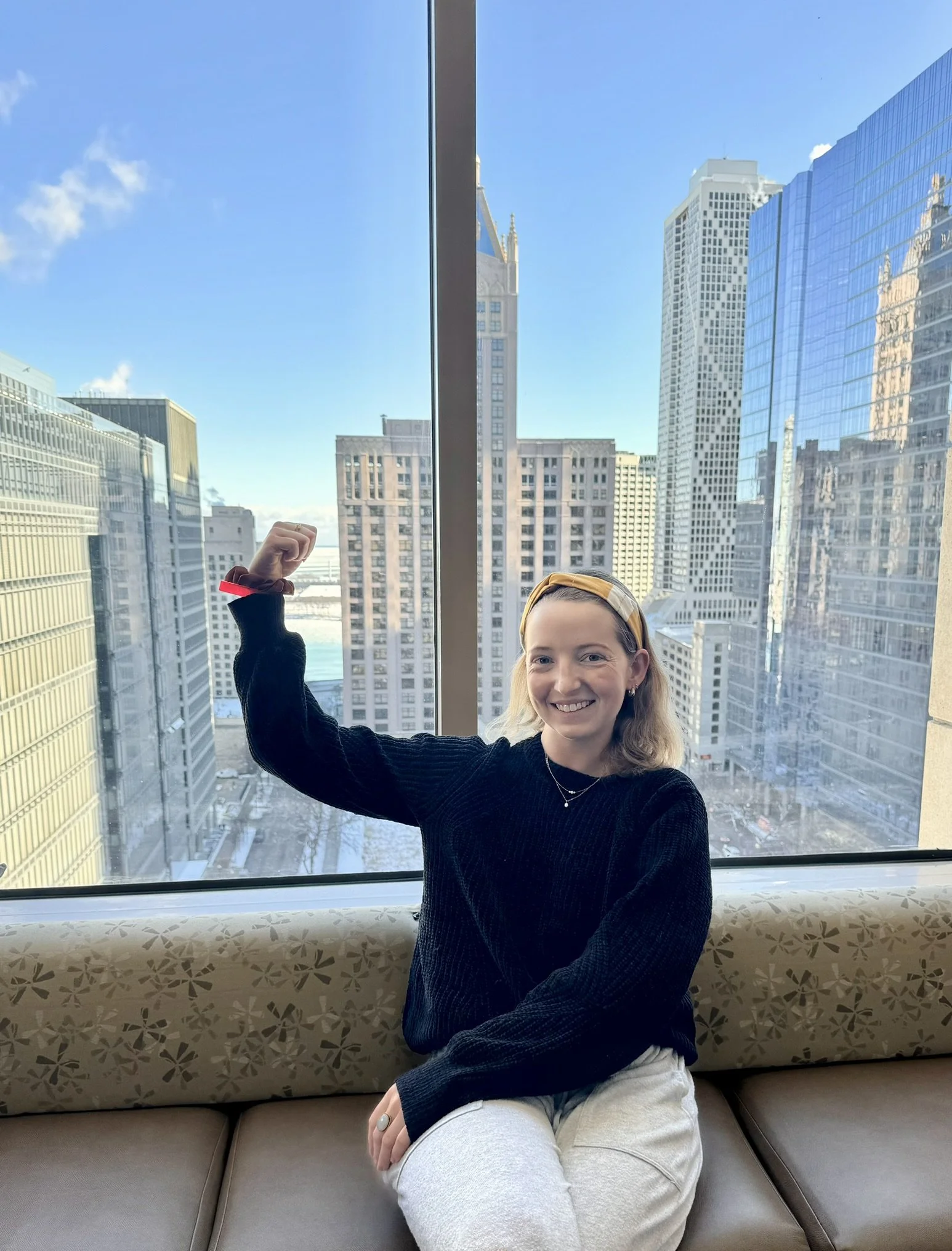My J-Pouch Experience
My First Year with a J-Pouch
It’s been 12 months since the day I woke up from my third (and hopefully final) surgery for IBD. Right after bowel surgery, despite the abdominal pain, nausea from meds, and general fogginess, you’re encouraged to get up and walk to help digestion and recovery.
The first few times I stood up, I instinctively reached for my ostomy bag, which always needed support when I moved around. To my delight, that reflex was no longer needed. The bag was gone. I had finally accomplished my primary mission for the last year. My insides were back inside and I felt like me again.
Those first few days in the hospital were uneventful compared to my first surgery, which was emergent and was “big T” Traumatic. Getting discharged is a tricky balance. You want to leave the noise from hospital, the poking and prodding, the processed food, and the unsexy gowns. But once you get home, or in my case, an AirBnB, things get real. Every pain is met with uncertainty. Your nervous system is on high alert, and without a nurse to reassure you that the pain is normal, it can send you spiraling.
After a few days of ticking through the discharge checklist, doing laps around the floor, eating food, and going to the bathroom “naturally” a few times, I was ready to go and break in my new insides.
I snapped some celebratory photos from my hospital room with Lake Michigan in the background, showing off my ostomy-less tummy. I said my goodbyes to my amazing team at Northwestern, including the two nurses named Gladys, who I originally named my ostomy after, and walked slowly to the car with my parents and sister supporting me.
But like I said, once you leave the hospital… it gets real. And it got really real for me.
The next week was one of the most intense of my life. I had no idea what I was truly in for. Despite reading every Reddit thread and post on jpouch.org out there, nothing prepares you. Like becoming a parent or falling in love, you just have to experience it to understand.
The cramping followed by burning felt like a UTI but 10x worse. I tried every cream, wipe, sitz bath, heating pad, ice pack, natural remedy I could find, nothing helped. I muffled my cries into a towel so my parents wouldn’t worry. Not because I was protecting their feelings, but because I was terrified that the surgery didn’t work and I’d have to go back.
When I had a moment of peace, I resorted to my ultimate comfort activity. Cooking. I made pumpkin muffins, Rice Krispie treats, and blended soups. I secretly love the post-surgical diet: soft, cooked, high-calorie foods that go down easily. You are told to eat like a little kid. So I did.
But the urgency and frequency didn’t stop. I couldn’t leave the house, not even for a short walk. I remember trying to walk with my dad one day and turning back half a block in because the pain was so bad.
And look, if you’re considering this surgery, I know this doesn’t paint the best picture of recovery. But it was my reality. It might not be yours. Over the next year and a half, the thing I feared most happened, my j-pouch never normalized.
The intended and optimal outcome of the surgery was not my reality. I got back on medication, which I was told I likely wouldn’t need. I had dozens of appointments. I changed my diet (again). I had accidents. I got dehydrated. I felt unworthy and uncomfortable in my relationships, at work, and in my own body.
But even with all of that, I still smile every time I do a tummy pose in yoga, sleep on my stomach on my right side, or put on a bikini or slinky dress. Was the year of pain and setbacks, and three major surgeries, worth it? Of course it was.
I don’t know what the future holds for my J-pouch, but my quality of life feels better in this moment because I’m able to live the way I want to. Even with discomfort, there are moments of peace. I can go on a 6-mile hike and not think about the bathroom once. I can go to a concert and enjoyed it instead of dissociating because my body is so ravaged by my disease.
I’ll need medication for the rest of my life — but that was already the case. I wish I had a healthy, functioning colon. But I didn’t. I chose to continue living life on my terms while I had UC and I paid the price for it.
I don’t know if I’ve learned my lesson. I still stubbornly live life on my own terms: eating cherries in peak season, going to Europe on a whim, moving across the country to be closer to the mountains, choosing one of the hardest career paths, and staying up past my bedtime.
If you live with IBD and you’re a candidate for this surgery, you’ve already been through hell. For me, the ostomy was physical proof of how much my health had declined, to myself and my friends and family. There was no more pretending in social situations, no more “you look so skinny” compliments, no more deflecting with humor (jk, that never stopped). Gladys was the sign my invisible disease was serious and almost took my life. The support I received from my closest friends and complete strangers motivated me to pay that forward one day.
If you’re struggling with IBD or deciding on surgery, I’m here. Email me at liza@florabellefood.com if you want to talk. I can only share my experience, how I coped, and how I’m still living my life despite everything.
Be well,
Liza



